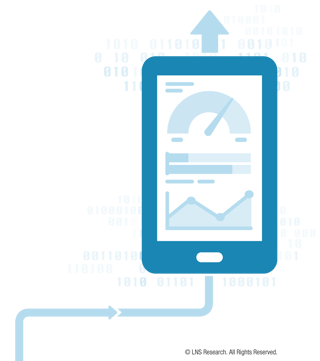 On Thursday, July 13, LNS Research hosted the webcast, “IIoT and Digital Transformation Investment: Proof Points Versus Hype and Promises.” The presentation examined Digital Transformation use cases, and LNS explained the IIoT entry points, approaches, and benefits of six industrial companies.
On Thursday, July 13, LNS Research hosted the webcast, “IIoT and Digital Transformation Investment: Proof Points Versus Hype and Promises.” The presentation examined Digital Transformation use cases, and LNS explained the IIoT entry points, approaches, and benefits of six industrial companies.
Click here to speak to Matthew Littlefield
Q1. Will an IIoT platform by itself provide business value without a complimentary Artificial Intelligence/Machine Learning (AI/ML) implementation?
A1. Over time we’ll start seeing more tech platforms with embedded AI/ML, but obviously, we’re not quite there yet. Big tech companies and those that specialize in AI will lead the way, but those options are relatively generic in the sense that (today) they’re bolt-on’s and still need to be embedded and “taught” the process. This is the first year we’re even seeing it. Until it happens fully – that is, AI/ML as an out-of-the-box option or feature – there is absolutely value to be had today without AI/ML. And, when AI/ML fully arrives, it will compound the value of analytics industrial companies put in place now.
Q2. You mentioned things like maintenance, asset performance, production processes, safety, and quality. These are ALL areas of concern for our company, so how are we supposed to figure out where the right place is to start?
A2. Where you start is a function of understanding your company's business drivers. Approaching the strategic objectives and defining them in a formal way helps you understand gaps and pain points. It’s an output of having a strategic approach to Digital Transformation, rather than separate silos and functions. The use of these technologies will have an impact on many areas of the business. So, a more structured, formal approach will help define the roadmap of where to start and how to move forward.
Q3. How does an Enterprise Architecture team help in an IIoT project?
A3. The Enterprise Architecture teams we’ve worked with are foundational to understanding the Industrial IoT platform space. They possess the skill set to identify the scope and role of platforms, where they fit, how that will interface with existing applications, which existing applications are long term, which will be replaced by some of these more flexible, lightweight, and adaptable mashup applications. So really, we see the Enterprise Architects as truly essential to helping the business understand how to build an operational architecture.
Q4. Who should head up the pilot?
A4. In many cases, it’s the front-line operations management and plant engineers that are taking on these important roles. Dan Miklovic recently published an eBook that addressed this, “Bringing APM 4.0 to Life: Think Like MacGyver to Drive Better Asset Performance.”
Q5. Which IIoT platforms are being used for condition based maintenance (CBM) in food and beverage manufacturing? Seems to be a plethora of IIoT platforms out there, how can a company navigate all the options, when it’s so confusing?
A5. CBM is high-value and a common use case, so many platforms provide for it in some way. With the volume of platforms out there, it’s not uncommon for companies to struggle with solution selection. Two LNS resources that can help are the newest IIoT Solution Selection Guide, which will be released soon and the Software Selection Handbook.